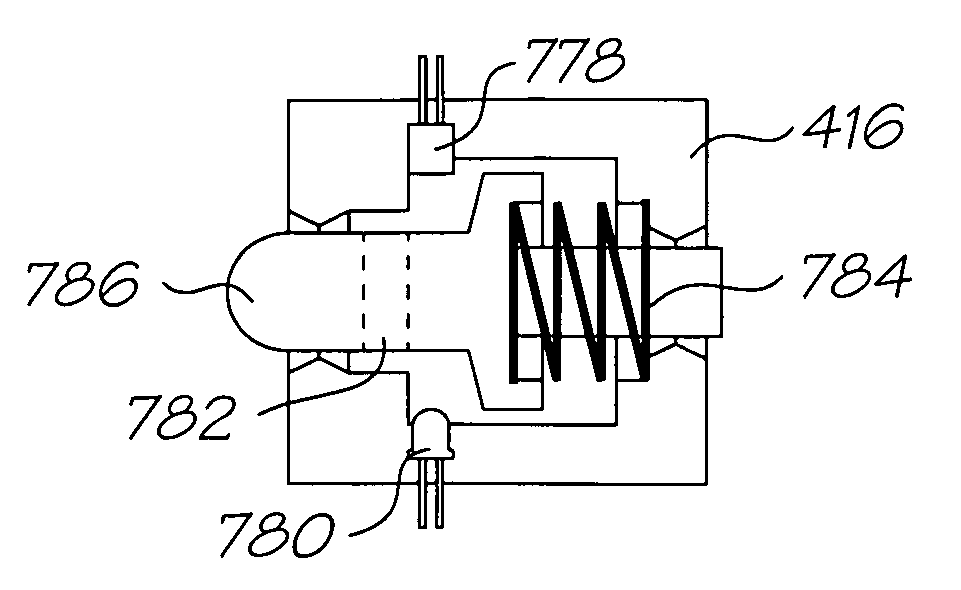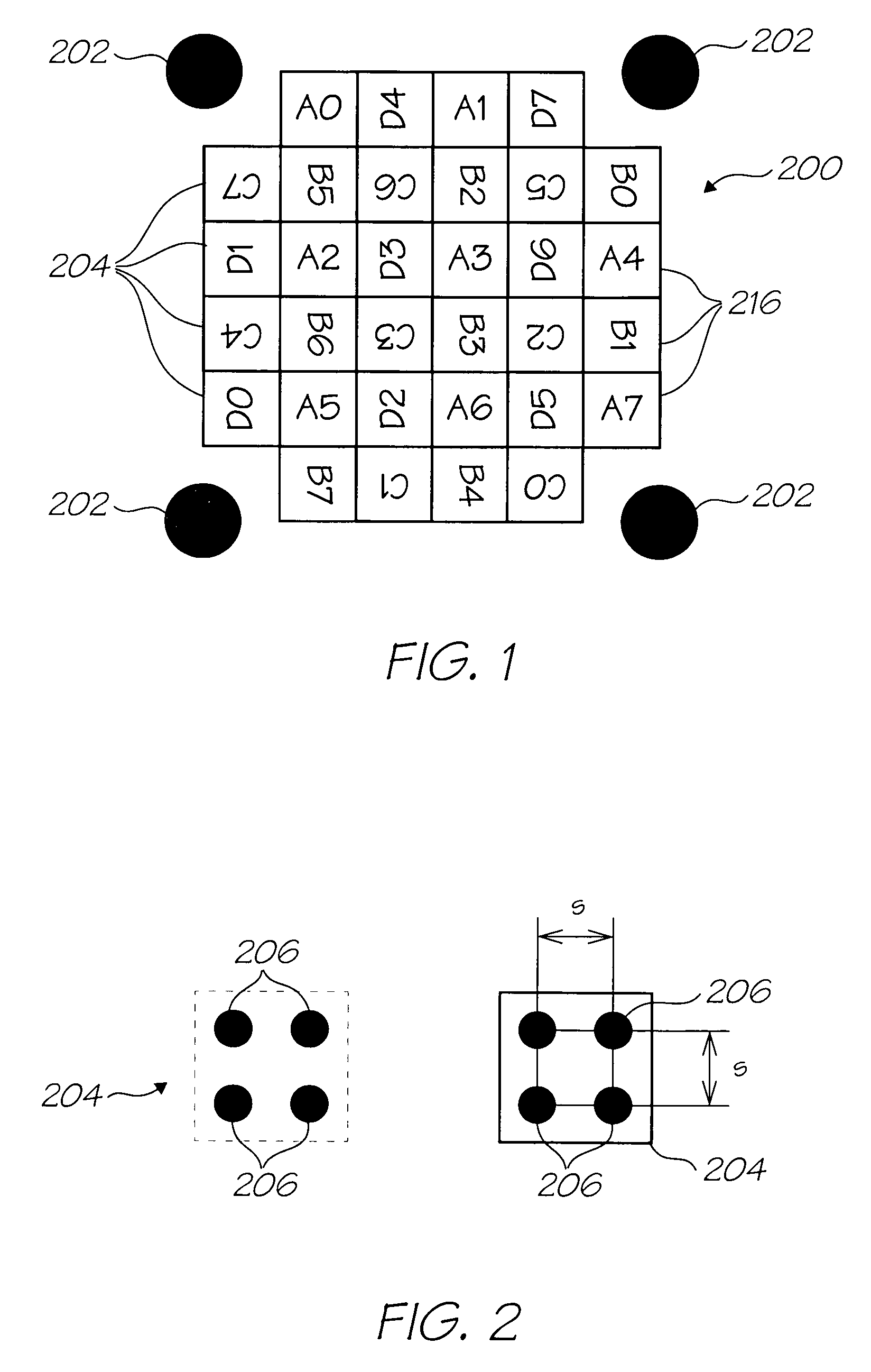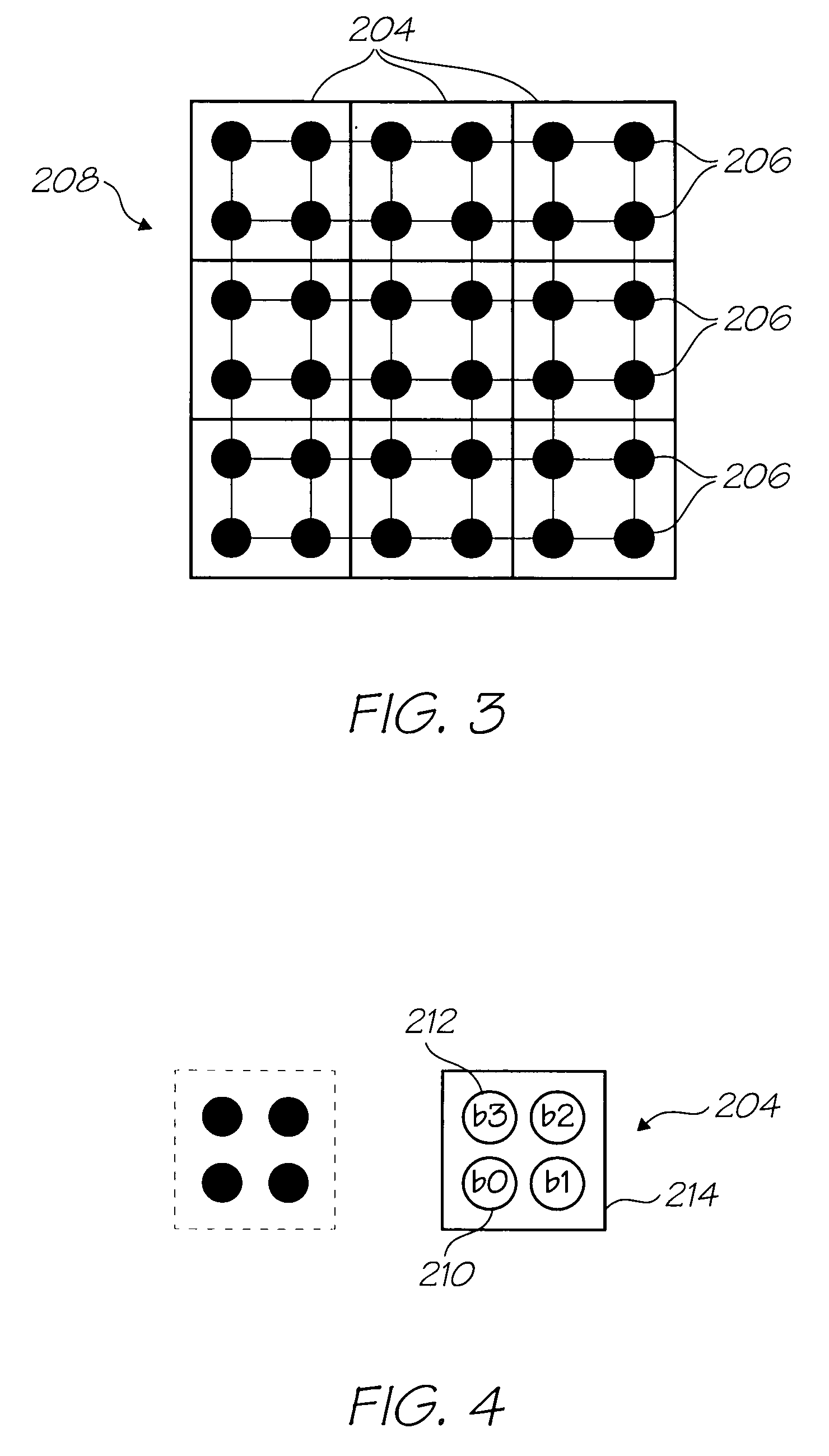Optical force sensor
a force sensor and optical technology, applied in the field of optical force sensors, can solve problems such as complicated pen production, and achieve the effect of reducing contact friction and less potential damage to the force sensor
- Summary
- Abstract
- Description
- Claims
- Application Information
AI Technical Summary
Benefits of technology
Problems solved by technology
Method used
Image
Examples
Embodiment Construction
[0178] As discussed above, the invention is well suited for incorporation in the Assignee's Netpage system. In light of this, the invention has been described as a component of a broader Netpage architecture. However, it will be readily appreciated that electronic styli have much broader application in many different fields. Accordingly, the present invention is not restricted to a Netpage context.
Netpage Surfaces Coding
Introduction
[0179] This section defines a surface coding used by the Netpage system (described in co-pending application Docket No. NPS110US as well as many of the other cross referenced documents listed above) to imbue otherwise passive surfaces with interactivity in conjunction with Netpage sensing devices (described below).
[0180] When interacting with a Netpage coded surface, a Netpage sensing device generates a digital ink stream which indicates both the identity of the surface region relative to which the sensing device is moving, and the absolute path of t...
PUM
 Login to View More
Login to View More Abstract
Description
Claims
Application Information
 Login to View More
Login to View More - R&D
- Intellectual Property
- Life Sciences
- Materials
- Tech Scout
- Unparalleled Data Quality
- Higher Quality Content
- 60% Fewer Hallucinations
Browse by: Latest US Patents, China's latest patents, Technical Efficacy Thesaurus, Application Domain, Technology Topic, Popular Technical Reports.
© 2025 PatSnap. All rights reserved.Legal|Privacy policy|Modern Slavery Act Transparency Statement|Sitemap|About US| Contact US: help@patsnap.com



